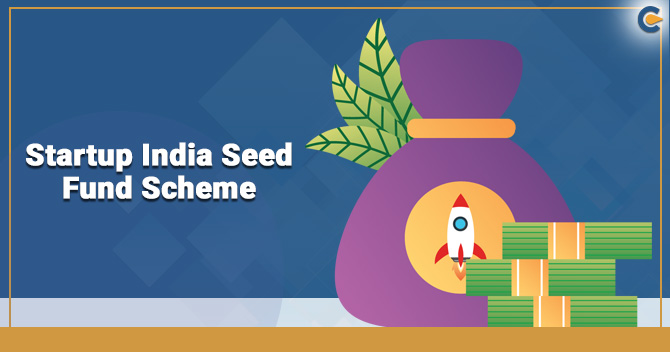The process of compressing or shaping a substance (mineral) into the shape of a pellet is known as Mineral beneficiation, including pelletisation. Pellets are made from various sources, including chemicals, iron ore, animal compound feed, polymers, waste materials, and others. The method is considered a practical choice for storing and transporting these commodities. The technique is frequently employed in powder metallurgy engineering and medicine. Mineral beneficiation, including pelletisation, is a terminology that is frequently used interchangeably to refer to several non-pressure agglomeration processes that turn powders or material fines into bigger particles/agglomerates. The phrase is mainly used to describe the formation of spherical granules on a disc pelletiser or a drum agglomerate. It refers to the formation of tiny pellets in a pin mixer or another tumble-growth agglomeration.
Minerals that are commonly pelletised include:
- Ferrous minerals
- Fluorite
- Gypsum
- Iron Ore
- Alumina
- Basalt
- Bauxite
- Borax
- Clay
- Limestone
- Nickel
- Phosphorus
- Potash
- Silica
Mineral Beneficiation, Including Pelletisation of Iron Ore
Pelletising comprises mixing raw materials, forming pellets, and a heat treatment that bakes the soft raw pellets into challenging spheres. The raw material is then rolled into a ball before being burned in a kiln or grate to sinter the particles into a tough spherical.
The structure of iron ore pellets in the blast furnace as packed spheres allows air to circulate between the pellets, reducing resistance to the air that travels up through the layers of material during smelting. The iron ore particle arrangement in a blast furnace is dense, limiting air movement. The quality of iron ore pellets is determined by several aspects, including feed particle size, amount of water utilised, disc rotation speed, disc bottom inclination angle, residence time in the disc, and the quantity and quality of the binder(s) employed.
Preparation of Raw Materials
To satisfy the needs of the finished pellets, additional ingredients are added to the iron ore (pellet feed). This is accomplished by placing the mixture in a pelletised, which may hold a variety of ores and additives, and mixing to alter the pellets’ chemical composition and metallurgical qualities. This processing phase often includes the following stages: concentration/separation, homogenisation of the substance ratios, milling, increasing thickness, classification, homogenisation of the pulp, and filtration.
Formation of the Raw Pellets
The goal of generating raw iron ore pellets is to produce pellets with an adequate size range and mechanical qualities that are beneficial throughout transference, transport, and usage pressures. Waste materials, for example, are ground before being heated and placed in a press for compression. Both mechanical force and heat procedures are employed to achieve the desired pellet qualities.
There are two options for the industrial manufacture of iron ore pellets in terms of equipment:
– Drum and
– Mineral beneficiation, including the pelletisation disc.
Thermal Processing
The pellets are further subjected to thermal processing, which includes drying, preheating, firing, after-firing, and cooling, to bestow high-resistance metallurgic mechanics and good features. The time of each stage, as well as the temperature at which the pellets are treated, have a significant impact on the ultimate product quality.
Pharmaceutical Industry
Pelletisation is the agglomeration process that turns fine powders or granules into spherical pellets in medicine. The technique has grown in popularity because it allows for the controlled release of dose forms, resulting in consistent absorption with reduced mucosal irritation in the gastrointestinal system. Numerous pelletisation methods are used in the pharmaceutical sector, which usually varies depending on the bonding pressures. Balling, compression, and spray congealing are some of the techniques. Balling is analogous to wet (or green) pelletisation in the iron ore industry.
Pelletising Of Animal Feeds
Pelletising animal meals can result in pellets varying in size from 1.2 mm (0.047 in) for shrimp feeds to 3-4 mm (0.12-0.16 in) for chicken feeds to 8-10 mm (0.31-0.39 in) for beef feeds (stock feeds). Pellet mill technology is used in a feed mill to pelletise stock feed.
Preparation of Raw Ingredients
Feed materials are often pounded first to minimise particle size. The ingredients are batched before properly blended and stirred by a feed mixer. After the feed has reached this condition, it is ready to be pelletised.
Pelletising Of Wood
Wood pellets, produced by compressing sawdust or other crushed woody materials, are utilised in a wide range of energy and non-energy applications. Wood pellets are frequently used to replace coal in the energy industry, with power facilities such as Drax in England replacing most of its coal consumption with wood pellets. Wood fuels are considered a low-carbon kind of energy since responsibly harvested wood does not cause a long-term rise in atmospheric CO2 levels. Wood pellets are also utilised for heating in homes and businesses, either in automated boilers or pellet stoves. Compared to other wood fuels, pellets have a greater energy density, are easier to handle since they flow like grain, and have a low moisture content.
Why Pelletize Minerals?
Depending on the material being processed and the intended end use, Mineral beneficiation, including pelletisation, can provide a variety of advantages. Typical advantages include:
Stable and Efficient Mineral Processing
Mineral beneficiation, including pelletisation, may significantly enhance production operations in several circumstances. This is accomplished by improved process flow, better efficiency, and the removal of dust and particles.
Pelletising is also commonly utilised to optimise downstream operations. Minerals, for example, are frequently pelletised before thermal treatment because pellets facilitate heat transmission in a material bed. For example, iron ore is pelletised or “balled” in preparation for the steel-making process since it decreases the quantity of coking coal required in the furnace while also cutting emissions and giving various other benefits.
Better End-Product Quality
Minerals are typically pelletised to manipulate particle properties to improve the finished product’s look, handling, and performance. Processing techniques have improved to the point that producers may develop a product with the exact mix of qualities they’re seeking, from regulating active ingredient release to optimising product density and more. The Mineral beneficiation, including the pelletisation process, is highly adaptable in terms of product composition, allowing for the simple addition of additives. For these reasons, it is a prevalent practice in the fertiliser and soil amendment business. Mineral beneficiation including pelletisation can be pelletised with micronutrients, organic binding agents, or other helpful additions to create a high-performance complex fertiliser or other soil treatment product in this application. As part of the pelletising process, the product may be coated to manage release attributes or impart superior handling and storage characteristics.
Improved Handling and Storage
Another important reason for Mineral beneficiation, including pelletisation, is their handling and storage qualities. Dust production, lack of flowability, segregation concerns, and other handling and storage issues can all be handled by Mineral beneficiation, including pelletisation, by adjusting particle properties such as attrition, bulk density, moisture content, size and shape.
Fine materials that have been processed into pellets are also considerably easier to transport and can assist companies in avoiding the liabilities that are frequently connected with a dusty product.
Developing a Mineral Beneficiation Including Pelletisation Process
Batch and pilot testing are critical steps in establishing Mineral beneficiation, including an efficient pelletisation process that produces a consistent output.
Because each material responds differently to agglomeration due to the unique matrix of material composition and characteristics, the pelletising process is often considered a blend of art and science; even minerals with a well-established industry require significant testing due to their natural variation.
At the FEECO Innovation Centre, mineral pelletising studies at the batch and pilot scale are performed to analyse the process variables required to produce a product with the specified qualities on a continuous basis from the specific mineral source.
A successful mineral pelletising line may appear to be simple, but it is a finely balanced combination of factors. We assist our clients in establishing what is important for a certain material through process development testing approaches and then use those process variables to manage the output. Depending on the material and procedure used, variables that impact the stability of the Mineral beneficiation, including pelletisation as well as the quality of the finished product, vary. But, in general, the following parameters have an impact on the process:
- Bulk density
- Material consistency
- Particle size distribution
- Rotational speed
- Temperature
- Disc angle
- Raw material feed location
- Moisture content
- Material feed rate
- Binder feed rate
- Retention time
Conclusion
Pelletising is an essential technology in the mineral processing[1] sector because it allows manufacturers and producers to generate superior goods, enhance economics, and provide a more reliable production line.
It is essential to appoint an expert in mineral pelletising systems, bespoke equipment, process development, and spares and service support. The industry’s top names trust that. Therefore, contacting an expert for more information on extensive mineral pelletising services is recommended.
Read Our Article: Step By Step Guide To Start Mineral Water Plant In India











